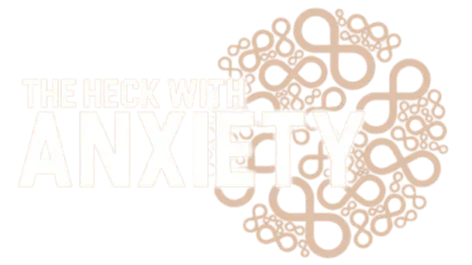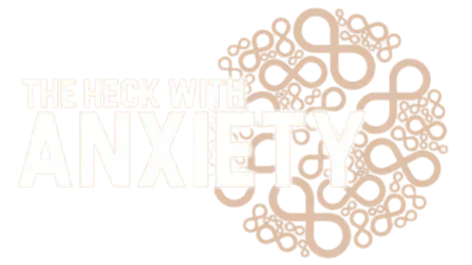How to Create Boundaries Without Feeling Guilty: A Path to Mental Freedom

Anxiety or panic attacks are more than just feeling worried. They can show up without warning, triggered by almost anything, and bring an intense wave of irrational fear. When it hits, your heart races, your breath shortens, and fear threatens to take over.
You can’t always stop an anxiety attack from happening, but you can be ready for it. Having an anxiety emergency kit on hand gives you tools to manage the moment and prevent it from escalating. The episode will pass—you’re simply giving yourself the structure to ride it out.
What’s an Anxiety Emergency Kit?
Have you ever heard about the transformative power of visualization or the law of attraction? Both concepts have the potential to ignite a positive mindset within you. Visualization is not just a tool; it's a phenomenon that has empowered countless Olympic athletes, entrepreneurs, and entertainers to program their minds for success before they even step onto the field or stage.
By understanding and practicing visualization, you gain the power to intentionally manifest your dreams, objects, and people into your life experience. Whether or not you believe in the concept of being the creator of your own reality is irrelevant. What matters is that you have the freedom to experiment with your thoughts and build something new in your reality.
Think of it less like a first aid box and more like a mental toolkit. It’s a collection of strategies or practices that help you feel grounded and in control. Everyone’s kit looks different. What matters is choosing things that work for you.
In the beginning, it might be hard to recall your tools when you’re in the middle of an attack. That’s why it helps to write them down or even say them aloud daily—turn it into a calming routine.
What to Include
You’ll want to experiment a bit. The best tools for you might depend on where you are, how intense the anxiety is, or how you’re feeling that day. Here are a few solid options:
1. Count Something
Counting forces your brain to focus on something else—tiles on the floor, cars on the street, even ceiling panels. It creates distance between you and the panic.
2. Controlled Breathing
Slowing your breath can ease both physical and emotional symptoms. Try inhaling for five seconds, holding briefly, then exhaling for five seconds. Repeat until you feel calmer.
3. Make a To-Do List
If overwhelm is your trigger, putting everything down in a list—on paper, on your phone, or even just in your head—can create order and make your next step clear.
4. Focus on One Task
Anxiety often pulls your attention in a dozen directions. Instead, zero in on one small task. Whether it’s making tea or opening an email, give it your full attention to regain control.
5. Quick Meditation
Even a one-minute body scan can help. Close your eyes, breathe deeply, and check in with yourself. No need for a quiet room or special app—just presence.
6. Gentle Exercise
Your body is primed for fight-or-flight. Movement helps discharge that energy. A brisk walk, some jumping jacks, or even stretching can release tension and improve your mood.
7. Call Someone You Trust
Having someone who “gets it” can be the lifeline you need. Reach out. Whether they talk or just listen, that connection can ground you quickly.
You might not be able to stop an anxiety attack from happening, but you can prepare for it. Build your emergency kit, practice using it, and know that you’re not powerless in those moments. Small, intentional actions can make a massive difference.
Visualization is a mental practice that helps a person develop vivid and detailed mental images of their dream life or desired results. You can use imagination to simulate the experiences in your mind, a technique often used by sports athletes for psychology and personal development.
For example, if you are preparing for a swimming competition, you can close your eyes and visualize yourself confidently taking first place in the competition. This will help your subconscious mind think of these imaginary situations as significant. Using all of your senses during the visualization process will help you practice effectively, which will create the way for your ideal future and specific goals.
Visualization has many uses, such as manifesting a specific goal or preparing yourself for tough challenges. According to a study, creative visualization techniques can improve performance. For example, tennis players who visualized doing better serve performed exceptionally. Many successful people focus on using visualization techniques regularly, which makes their subconscious mind more open-minded to achieving the outcome they envision.
Using your imagination can significantly move you toward your dream life. Here are some of the most useful and favorite visualization techniques that will help you to achieve your goals:
Visualization can truly change your daily life by helping you manifest a positive mindset and achieve your dream life. By consistently applying these powerful visualization techniques, you can set yourself up for success. Engage all of your senses and maintain a positive emotional focus to enhance your desired outcomes.
Adopt a regular manifestation practice to keep your goals clear and your motivation strong. Embrace a positive mindset, believe in your ability to achieve your goals, and witness how your life aligns with your dreams.

Subscribe for clear, real-world strategies to help you manage stress, build resilience, and feel more in control of your day.
© 2025 The Heck With Anxiety
Privacy Policy
Terms and Conditions
Refund Policy
Legal Disclaimer
